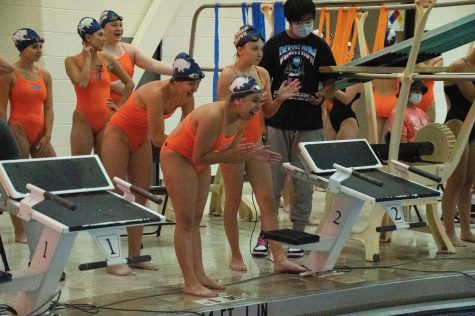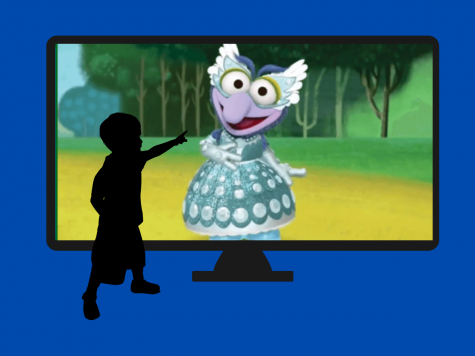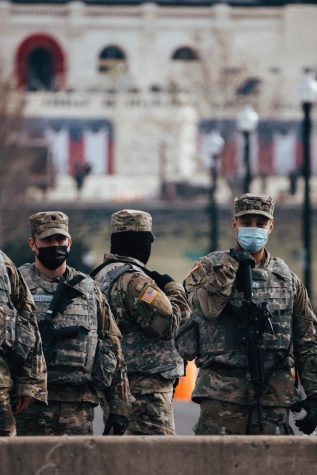Competitive academic activities require emphasis on team cohesiveness
Anticipation fills the crowd as the football flies across the field. The star quarterback catches it single-handedly before sprinting into the end zone. The crowd erupts into cheer.
This sort of image is common when considering competitiveness in a high school setting. But 10 of BG’s 38 competitive activities stray far from it, sharing a different quality: a lack of athleticism. Instead, these activities are rooted in academia.
“I think that the competitive aspect of sports is much more in your face,” Speech coach Joanna Augsburger said. “With competitive academic activities, I think that kids have these noncompetitive hobbies, and they are suddenly put into a situation where they have to compete with them. It’s less obvious, but they’re very similar at the root.”
Activities such as Speech, DECA and Model UN incorporate competitive aspects into academic interests such as public speaking, business and international conflict. They involve competitions in which members complete speeches, mock situations or written exams in front of judges. The judges then rank them against members from other schools, awarding the top-ranking students with medals and, in the case of IHSA-sponsored activities, advancement to further competitions.
“Everyone wants to succeed, and the possibility of placing when there are a lot of people competing is really exhilarating,” DECA and Speech member junior Anjali Subash. “I think that causes a lot of competition.”
Competitive athletic and academic activities share another similarity beneath the surface: their team elements. While most athletic teams compete as a group and most academic teams place their members into individual events, both spend time together during practices, games and matches, providing team members with a heavy influence on one another’s attitudes and behaviors.
This has many benefits and drawbacks—team-bonding arguably being one of the greatest benefits. It goes without saying that when team members spend hours together working toward the same goal, they are bound to find enthusiasm and motivation in one another. But unfortunately, “working toward the same goal” is not always the case. The individual triumphs emphasized in competitive academic activities can lead to a loss of goal alignment, a feeling of disconnection unlike anything experienced by those competing alongside their teammates.
“Sometimes it can be hard to remember that Speech is a team event,” Augsburger said. “When you isolate yourself from that team spirit and only care about winning, you’re suddenly not a part of what your team is about, and you miss out on the positive aspects, which can be harmful to the rest of your team.”
This feeling of disconnect develops a stronger need for team-building methods, as group cohesiveness may not appear on its own. Speech incorporates games and peer review with this goal in mind, Augsburger said. Model UN strives to develop similar goals among team members by encouraging students to make positive memories and meet new friends at competitions, according to junior member Reenie Deckowitz.
“You need to make sure you’re not taking things too seriously,” Deckowitz said. “Otherwise, it can get aggressive and prevent you from having positive experiences, which should be what it’s really about.”
But perhaps most importantly is the honest discussion of team values. In order to ensure that all team members are on the same page, coaches must initiate conversations surrounding their team’s stance on competitiveness, goals and teamwork.
“Our [Model UN] team cares about learning through experience and making good interpersonal relations,” Deckowitz said. “I know that it’s really competitive for some people, but I think that most of my team would agree about that.”
Some team members may have differing stances surrounding competitiveness and individual goals. But beginning the season with a dialogue centered around these issues allows for a more cohesive, supportive and understanding environment, a definitive factor in one’s experience as both an individual and a member of a team.
“People join [competitive academic activities] for different reasons,” Subash said. “No one should have to change to please the team, but it’s nice to have the entire team behind you whether or not you agree.”



